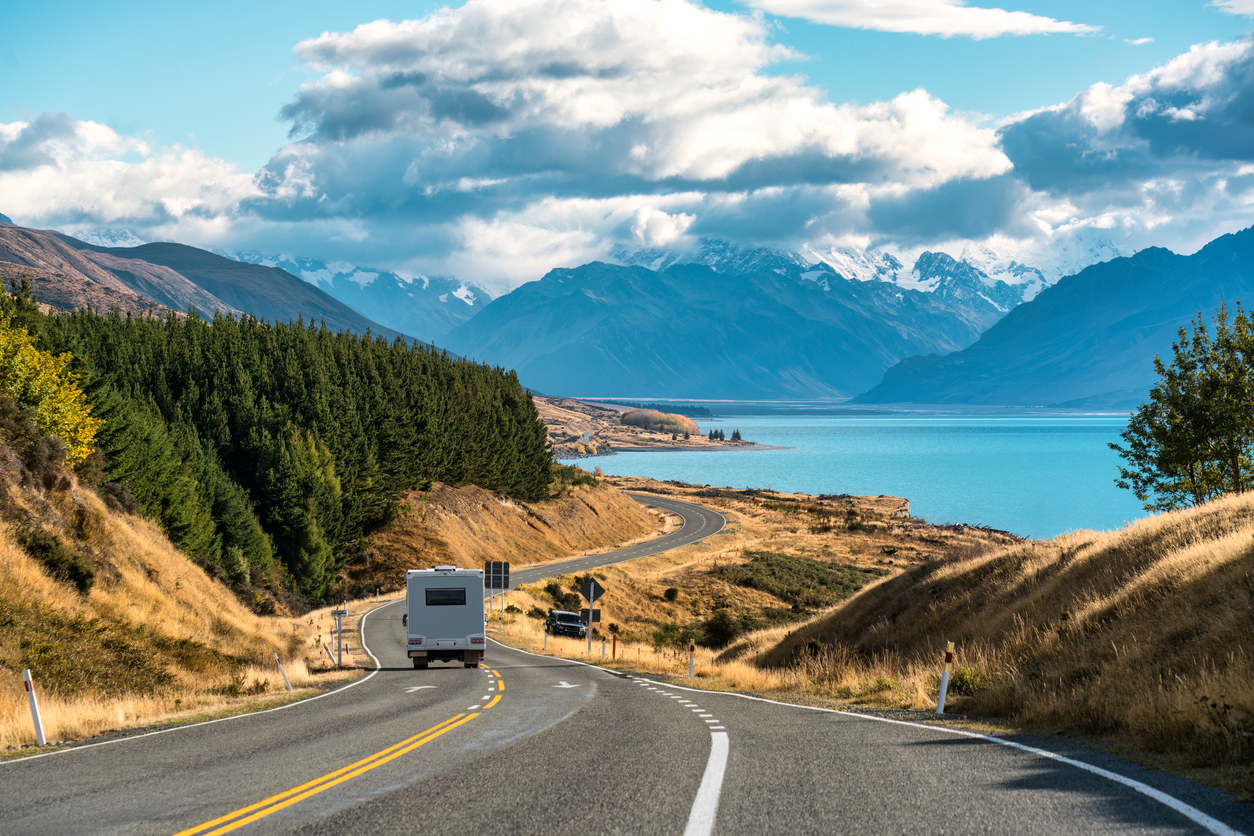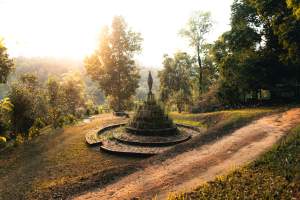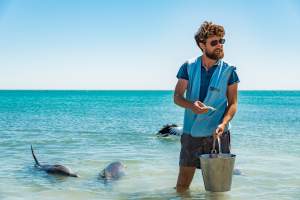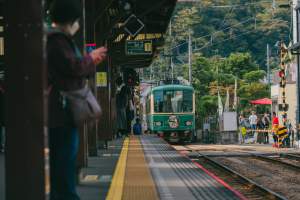
Some trips are about the destination. Others are about the ride. In New Zealand, it’s both — and there’s no better way to experience it than behind the wheel of a camper van.
This isn’t just a way to get from point A to point B. It’s freedom on four wheels. It’s waking up to mountain views, pulling over for impromptu swims in glacial lakes, cooking dinner with the windows down and a waterfall in the background. New Zealand’s roads aren’t just highways — they’re invitations.
Whether you’re cruising the wild West Coast of the South Island or winding through Hobbit-worthy hills in the North, traveling by camper van gives you front-row seats to one of the most beautiful countries on Earth — with the flexibility to linger, detour, and sleep wherever the view demands it.
Here’s what it’s really like to explore New Zealand in a camper van — and why it might just be the best road trip you’ll ever take.
Why a Camper Van Just Works in New Zealand
New Zealand is tailor-made for van life. The scenery changes every hour, the roads are easy to navigate, and the infrastructure is surprisingly van-friendly. You’ll find public toilets, free camping zones, and dump stations all over the country. Combine that with a national obsession for hiking trails, thermal hot springs, and jaw-dropping coastline, and it’s clear: this is a country built to be driven — and slept in.
Plus, unlike most road trip destinations, New Zealand is compact. You can go from alpine peaks to surf beaches to ancient forests in a single day without rushing. The variety is absurd — and you’ll want the flexibility to stop whenever it feels right.
What Kind of Camper Van Should You Rent?
Camper vans in New Zealand range from ultra-basic to fully self-contained mobile homes. What you choose depends on your budget, travel style, and comfort level.
Common types:
- Budget vans: Usually smaller, with a bed and basic kitchenette. Think: van with a mattress and portable stove. Great for solo travelers or couples.
- Self-contained vans: Include a toilet, sink, and sometimes a shower. Important for freedom camping (more on that below).
- Motorhomes: Full-on mobile apartments. Ideal for families or those craving extra space — but bigger rigs mean more limited parking options and higher fuel costs.
Tip: Make sure your van is certified self-contained if you want to camp off-grid in freedom camping areas. This certification matters, especially on the South Island where wild camping is more regulated.
The Rhythm of the Road
A typical day in a camper van doesn’t follow a strict itinerary — and that’s the point. It might go something like this:
- Wake up to birdsong and mist rising off a lake.
- Make coffee on your gas stove while standing barefoot in gravel.
- Drive an hour through alpine passes or rolling farmland.
- Stop to hike a 2-hour trail to a hidden waterfall.
- Pull over for lunch next to a sheep-dotted hill.
- Find a campsite with mountain views for $10.
- Cook dinner with local veggies and New Zealand wine.
- Watch stars from your van bed with the doors open.
It’s not about the rush — it’s about the space between places. That’s where the magic lives.
The Best Routes for Van Life
You can’t really go wrong, but a few classic loops and routes are practically designed for camper travel:
South Island:
- Queenstown → Te Anau → Milford Sound → Wanaka → West Coast → Arthur’s Pass → Kaikoura
- Jaw-dropping landscapes, glacier hikes, fjords, and coastal cliffs.
- Christchurch → Mount Cook → Lake Tekapo → Omarama → Dunedin
- Big skies, blue lakes, and stargazing to remember.
North Island:
- Auckland → Coromandel → Rotorua → Taupo → Tongariro National Park → Wellington
- Geothermal wonders, volcanoes, beaches, and Maori culture.
- The Forgotten World Highway (SH43)
- Winding, remote, eerie, and epic.
You can ferry your van between islands via the Interislander or Bluebridge ferry — book ahead, especially in peak season.
Where Do You Sleep?
You’ve got three main options:
- Freedom camping (free): Only allowed in certain areas and usually only if your van is self-contained. Always check local signs.
- DOC campsites (low-cost): Run by the Department of Conservation, these offer basic facilities (toilets, sometimes water) and insane views — often for $8–15 NZD per night.
- Holiday parks / paid campgrounds: Full amenities — showers, kitchens, laundry — and a good reset when you need comfort. ~$20–40 NZD per person.
Pro tip: Use apps like CamperMate, Rankers, or WikiCamps NZ to find and review campsites in real time. Locals and travelers keep them up to date.
The Learning Curve (and the Fun)
Let’s be honest: living in a van takes adjustment. You’ll learn fast how to:
- Cook with two burners and no counter space
- Strategize your shower days
- Deal with wet clothes in a small space
- Empty a portable toilet without gagging
- Embrace awkward parking jobs in windy towns
But you also get to:
- Sleep next to glaciers and wake up to birdsong
- Eat dinner with a view worth millions
- Pull over whenever something grabs you
- Feel a strange, satisfying sense of independence — no schedules, no reservations, no pressure
By day three, you’re in a groove. By day seven, you forget what a “real” house feels like. And by the end, you’re half in love with the van itself.
What to Pack (and What Not to)
Pack light. Space is tight, and you’ll wear the same layers over and over.
Must-haves:
- A quality rain jacket
- Reusable water bottle and coffee mug
- Headlamp or lantern
- Quick-dry towel
- Bluetooth speaker for road tunes
- Multi-tool or Swiss Army knife
Leave behind:
- Big suitcases (backpacks work better)
- Fancy clothes
- Too many shoes (you’ll wear the same pair daily)
- High-maintenance gear (irons, hair dryers — skip it)
When to Go
- Summer (Dec–Feb): Peak season — warm, lively, but busy and more expensive.
- Shoulder seasons (Mar–May or Sept–Nov): Ideal balance of weather, scenery, and fewer crowds.
- Winter (June–Aug): Great for snow-lovers, but many remote roads can be icy or closed. You’ll need an insulated van.
The Costs (Budget Breakdown)
Here’s a rough estimate for two people on a mid-range van trip:
- Camper van rental: $75–150 USD/day
- Fuel: ~$1.70–2.00 USD/liter (gas ain’t cheap — plan for long distances)
- Campgrounds: Free–$40/night
- Groceries: $50–80/week
- Extras (ferries, attractions): Varies, but budget some room for glacier hikes or boat tours
Total: Around $1,500–$2,000 USD for a 10-day trip for two. It’s not backpacker-cheap, but compared to hotels and cars? It’s a steal — especially with views like these.
Traveling New Zealand by camper van isn’t just a way to see the country. It’s a way to feel it — up close, hour by hour, kilometer by kilometer. You move to the rhythm of the road, the weather, and your own sense of wonder. You’re not locked into anything, and that freedom turns even the smallest moments into something unforgettable.
If you want a trip that’s beautiful, flexible, and deeply personal — put the key in the ignition, roll down the window, and go find your corner of New Zealand.
Just don’t be surprised if you start dreaming about buying your own van before the trip’s over.







